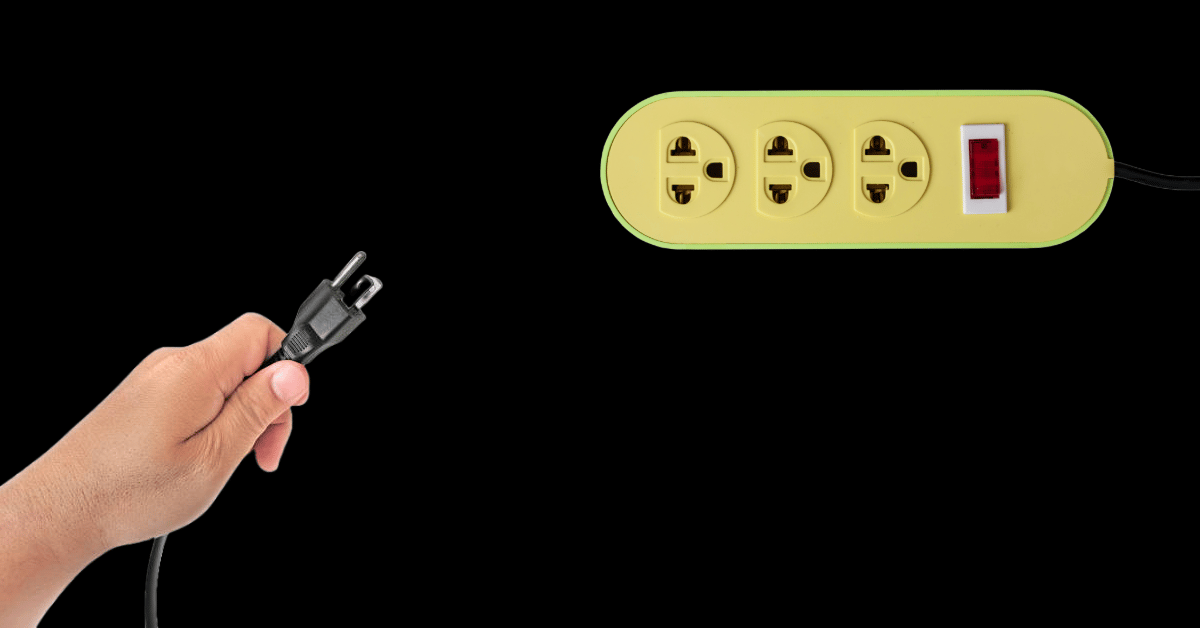
Don’t make us angry… then again, we’re all a bit ragey these days, aren’t we?
There’s an old saying in the business side of the news: “If it bleeds, it leads”. The idea is that violent and/or negative stories get more attention, therefore they should be pushed harder. Rage bait uses the same concept: people LOVE getting angry, and nothing lights up the comments like a hot take. Social media wants you seething so you create more engagement, but please, we beg you - don’t bite the bait!
- Devin Pike, Guest Editor 💜
Wanna hang out IRL?
You're invited to Lectures After Dark, hosted by The Attention Seeker team. This event's all about getting a bunch of marketers in a room, listening to a thought-provoking talk, and having a casual chat with some cool people. If you're in Auckland, we'd love to see you there on 14 August. $20pp
WHAT’S HAPPENING IN MARKETING TODAY?
Comic-Con causes illegal building wraps, US releases AI strategy wrap-up & a new chicken war unwraps

Uber Eats gets the "We Listen and We Don't Judge" treatment
The food delivery app is tapping into TikTok’s viral “We listen and we don’t judge” trend with a star-studded Super Bowl spot.The teaser features Charli XCX and Martha Stewart, with the full ad set to include none other than football daddy Matthew McConaughey. Uber Eats has a solid track record of using humour and cultural moments to make an impact (remember the “Uber Don't Eats” campaign?). With this one, they’re clearly betting on internet meme culture to do the heavy lifting. Watch the teaser here.
Drew Barrymore & Orlando Bloom set sail for MSC cruises
In a first for MSC Cruises, the brand is making its Super Bowl debut with an ad featuring Drew Barrymore and Orlando Bloom. The teaser is as camp (and kind of cringe) as you’d expect—Barrymore delivers a Madonna-inspired rendition of Holiday while onboard one of MSC’s massive ships. Cruise lines rarely go big for the Super Bowl, so this move is a clear signal that MSC wants to make waves (literally). With travel back in full swing, this could be a clever play for the brand to capture attention and book future voyages. Watch the teaser here.
Coffee Mate calls in Shania Twain
Nestlé-owned Coffee Mate is bringing That Don’t Impress Me Much energy to the Super Bowl with its first-ever big-game spot. And who better to lead the charge than country music icon Shania Twain? The teaser is light on details, with little to go off but a TikTok posted by Twain herself, singing the brand's original song about the joys of using cold foam??
But with Twain’s legendary status and a brand that’s already a morning staple, this could be a surprisingly fun entry into the Super Bowl ad arena. Watch the teaser here. We’ll definitely be watching come 9 February. And if you’re a marketer, you should be too.
-Sophie Randell, Writer
DEEP DIVE
Don’t bite the bait! Why online rage is all the rage right now

In the today's outrage-hungry world of online content, rage bait has become the go-to strategy for grabbing attention.
If it’s triggering, it’s doing numbers. From “hot take” relationship advice to nasty food content, the algorithm seems to reward whatever makes people the most upset. But why does rage bait travel so well online? Why tf do we keep falling for it, and what’s the cost of using anger as a growth strategy?
I’m not talking about controversial tweets (looking at you Azaelia Banks). This is about how rage is being weaponised by creators, brands and platforms to farm clicks, stoke division and hijack our attention.
So real quick - what is "rage bait"?
In short, it's content designed to provoke a strong emotional response, particularly anger or moral outrage, in order to drive engagement. It can be obvious, e.g. “men shouldn’t go to therapy”, or sneakily packaged as personal storytelling, cultural critique, or even health advice. The goal is to get people fired up enough to comment and/or share - and lord have mercy, does it work.
Anger is one of the most clickable emotions. The human brain is hardwired to respond quickly and strongly to perceived threats, especially in group settings. Algorithms love this, because more engagement means more visibility, and more visibility means more freaking ad revenue. The most infuriating part (ironic, I know) is that most of it rarely even reflects the creator’s real opinions. The content is solely designed to be viral, not right.
The internet has flattened every interaction into performance.
Every post is a chance to signal values, stake a position, or join a side. What used to be bar chat (albeit potentially heated) now plays out in front of a global audience. As a result, people are more reactive, more moralistic, and more invested in being seen to say the “right” thing.
There’s a strong incentive to call things out, pile on, or publicly disassociate, not just for justice, but for clout. Outrage also creates a fleeting sense of control. In a world that feels increasingly chaotic, pointing out what's wrong gives us a rush of moral clarity. And when we do it together in the comments or replies, it becomes communal. A bit like joining a booing crowd and throwing digital tomatoes at villains.
This is how harmless-seeming content can become literal battlegrounds. A woman eating a sandwich becomes a lightning rod for diet culture discourse. Or, a man talking about dating turns into a referendum on gender politics. It’s not so much about the content, but what it represents beneath the surface.
We operate in an extremely polarised ecosystem - that's why it thrives so damn well.
The platforms we reside on don’t just allow division, but depend on it. Middle-ground opinions are hard to package and easy to scroll past. But extremes are far juicier and clickable. They spark arguments. They inspire “response videos” and “this take is wild” quote tweets. And crucially, they generate activity.
Over time, audiences self-sort into sides. It becomes a team sport: red flag vs green flag. Toxic vs healthy. Congrats, you’re no longer watching content - you’re choosing an allegiance. The platforms learn your triggers and feed you more of what you engage with. The echo chambers get louder, and the stakes of every opinion feel higher.
Make no mistake - the system's working as designed.
Rage bait, therefore, has become a tool, a weapon even. Weaponised rage is when anger is intentionally provoked to achieve a goal. That might be growing a following, discrediting an opposing view, driving media coverage, or stoking division for political gain. It’s rage, not just as emotion, but as a tactic.
Some creators build entire platforms on it. Some media outlets depend on it. And yes, some brands are starting to use it too. Take a close look and you’ll spot brands deliberately posting controversial content to spark debate. Or using polarising imagery and language in campaigns to “stand out". When brands start stoking outrage on purpose, knowing full well it will lead to backlash, it means your attention is being weaponised.
So my advice? Don’t bite the damn bait!
Look, I KNOW it’s easier said than done. And this might piss y’all off, but it works because you let it. The moment you comment, quote-tweet, or share something just to say how much you hate it, you’ve already played your hand. You’ve boosted it. That doesn’t mean you have to disengage completely, but it does mean being more selective about where you put your energy.
Ask yourself: is this content trying to provoke me? Who benefits if I get upset? Is this a real issue or just a viral moment? And for marketers: just because rage bait works doesn’t mean you should use it. You can also down a Four Loko and fight a police officer - but does that mean you should? (The correct answer is "no".) Yes, it gets clicks. But it also erodes trust, damages brand equity, and encourages shallow, reactive engagement. Long-term relationships are built on trust - not outrage.
The internet doesn’t need you to be angry, it WANTS you to be. But not everything deserves your attention, your rage, or your keyboard. Sometimes, the smartest move is to protect your damn peace and scroll on by.
-Sophie Randell, Writer
TREND PLUG
Someone was throwing a fit

The phrase “throwing a fit” usually means someone’s being dramatic; sulking, arguing, refusing to leave the house (aka me on any given day).
But TikTok flipped it, and now it’s code for a sick outfit reveal.
Set to Work From Home by Fifth Harmony ft. Ty Dolla $ign, the trend starts with one person saying:
“Sorry we’re late, [insert person(s)] was throwing a fit.”
Then it cuts to that person in slow motion, showing off their look like the delay was absolutely justified.
TikTokers are usually using it as a duo format, where:
One person delivers the line
The other walks, spins, or poses in their fit as the beat drops
Examples:
Some remix it by making the “fit” an actual tantrum, but the OG version is all about the outfit.
How you can jump on this trend
Using the sound, open with text “Sorry we’re late, [insert person(s)] was throwing a fit” and cut to a slow-mo outfit reveal. Remember - serve looks, be smug and make it fashun.
A few ideas to get you started:
“Sorry we’re late, the executive suite was throwing a fit.”
“Sorry we’re late, our CFO was throwing a fit.”
“Sorry we’re late, our interns were throwing a fit.”
- Abdel Khalil, Brand & marketing executive
FOR THE GROUP CHAT
😲WTF: The Internet Is Changing…
✨Daily inspo: Do what you love and…
😊Soooo satisfying: Now I’m Hungry
🍝What you should make for dinner tonight: Cheeseburger Quesadillas
TODAY ON THE YAP PODCAST
Want even more “YAP”ing? Check out the full podcast here.
ASK THE EDITOR

I want to post more on LinkedIn but I always struggle with new topics to talk about. Help! - Sara
Hey Sara!
Thinking you need to keep coming up with new topics to talk about is a myth! Instead of reinventing the wheel every time you sit down to post, you should have a few topics you continuously talk about. My suggestion is to come up with 3-5 relevant topics you want to focus on in your content. Then, brainstorm 3-5 subtopics under each of these.
Once you've done this, you'll have a pretty good list of things you can write about so you're never starting from a blank page. I know we tend to worry our audience will get bored if we talk about the same few topics all the time. But it's good to remember that your followers aren't going to see every post you make.
Don't forget that your audience follows you because they care about the things you talk about. So bringing in too many different topics can alienate them. Sure, you should approach your core topics from various angles. But don't be afraid to repeat your message. After all, this is how you become known for something!
- Charlotte Ellis, Editor ♡
Not going viral yet?
We get it. Creating content that does numbers is harder than it looks. But doing those big numbers is the fastest way to grow your brand. So if you’re tired of throwing sh*t at the wall and seeing what sticks, you’re in luck. Because making our clients go viral is kinda what we do every single day.
